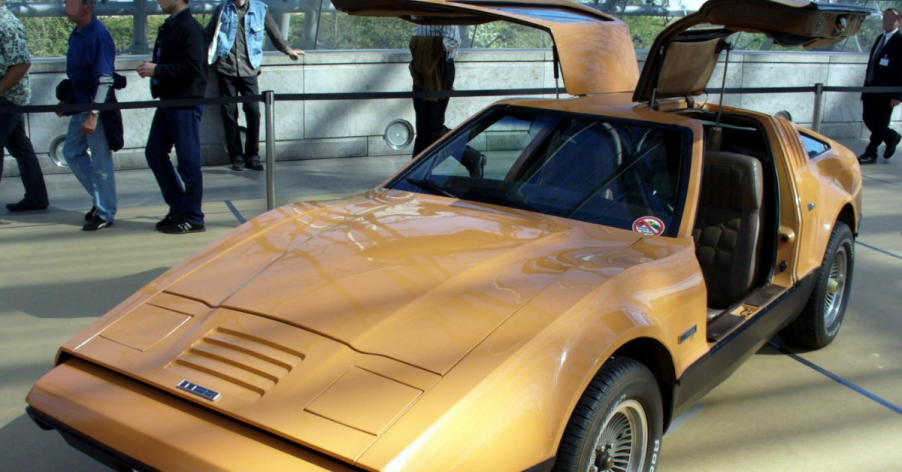
15 Sports Cars That Failed to Impress

Sports cars are often seen as the peak of the driving experience, but not all deliver. Some give you an exciting ride, while others fall short due to reliability issues, poor performance, or design flaws. For those seeking a true sports car experience, here are 15 models that might not be the best choice.
Pontiac Fiero

The roadster had the right looks: a mid-engine layout, sleek design, and sporty name. Early versions of the Fiero were criticized for their lack of power and overheating, especially under demanding conditions. Despite its potential, it wasn’t the thrill ride people expected. The Fiero’s limited oil capacity and occasional leaks contributed to engine issues.
DeLorean DMC-12

Known for its role in Back to the Future, the DeLorean DMC-12 boasted an iconic style. Its stainless steel body, gull-wing doors, and advanced design made it stand out, but it is often criticized for its performance and reliability. With a weak V6 engine and sluggish acceleration, the car faced difficulties in maintaining its pace.
Jaguar X-Type

Jaguar is known for luxurious, high-performance cars, but the X-Type is often considered one of its less successful models. Built on a shared Ford Mondeo platform, it lacked performance in terms of driving dynamics and performance. An uninspiring engine and bland handling made it feel more like a rebranded sedan than a true sports car.
Bricklin SV-1

Marketed as a safety-first vehicle, the SV-1 featured gull-wing doors, energy-absorbing bumpers, and a rear-wheel drive layout. However, this safety focus came at the cost of performance. Its heavy fiberglass body and underwhelming engine options left it lacking the speed expected from a true supercar. The design was unique, but the engineering fell short.
Ferrari Mondial

Ferrari is the last name you’d expect to be tied to an underpowered, unreliable supercar. A V8 supercar should thrill, but this fell flat. Enthusiasts were left disappointed by the boxy design and underwhelming powertrain. The engine was costly to maintain, with a timing belt that needed replacement every 30,000 miles or three years.
Mazda RX-8

Despite its unique rotary engine and sharp handling, the Mazda RX-8’s appeal was marred by dependability issues. While some appreciated its quirky design, others found it less appealing. The rotary engine, though innovative, was known for reliability problems, and these frequent issues often resulted in costly repairs, made long-term ownership challenging.
Chevrolet SSR

The Chevrolet SSR was designed to blend the excitement of a convertible sports car with the utility of a pickup truck. However, its V8 engine garnered mixed reviews, and the vehicle’s heavy build affected its agility and performance, leaving sports car enthusiasts feeling disappointed with the overall driving experience.
Mitsubishi Eclipse

Earlier generations of the Mitsubishi Eclipse gained a strong following, but by the time the fourth-generation model arrived, it did not resonate as well with enthusiasts. The glossy, sporty design was there, but this car lacked the power and handling that made it popular in the 1990s. Many owners often expressed concerns about the high cost of maintenance.
Triumph TR7

The TR7’s wedge-shaped design and performance did not meet the expectations set by earlier Triumph models. Reviews often noted that the handling was uninspiring, and the engine was underpowered compared to rivals. Although it had some charm, especially as a convertible, its unusual style and technical issues hindered its market success.
Ford Mustang II

The 1974 Mustang II, launched amid fuel shortages and stricter emissions rules, shifted its focus from performance to fuel economy. Its affordability and fuel efficiency contributed to its initial sales success. However, this sports car was significantly smaller and had less powerful engine options than the original model when it was first released.
Acura ZDX

Acura’s attempt to blend two distinct car styles led to mixed perceptions about ZDX. The goal was to blend the functionality of an SUV with the speed of a sports car. With its striking looks and sloping roofline, it appeared impressive, but many reviews pointed out its limited cargo space and cramped rear seating, making it less practical as an SUV.
Dodge Stealth

The Dodge Stealth sports car was built in partnership with Mitsubishi. It faced several technical issues, including its heavy weight, which affected performance, and complex electronics that often led to reliability problems. In addition, some cars had transmission issues, and the twin-turbo engine variants were prone to overheating under strain.
Lotus Elan M100

Many Lotus enthusiasts were disappointed by the subpar dynamic performance of this front-wheel-drive roadster. Known for crafting lightweight, nimble sports cars, Lotus made an unusual departure with the Elan M100. It received praise for its handling, but the Isuzu-sourced engine didn’t deliver sufficient power to match its agile dynamics.
Cadillac Allanté

Designed by Pininfarina, this model had a striking appearance that turned heads. However, many reviews noted its mechanical and performance shortcomings. As a luxury sports car, it was underpowered, and its front-wheel-drive layout limited performance capabilities. Still, the Allanté represented a bold attempt to merge American luxury with Italian design.
Subaru SVX

The four-speed automatic transmission limited the SVX to being classified as a Grand Tourer (GT) instead of a sports coupé. It took a leisurely 8.6 seconds to reach 60 mph, with a top speed of 143 mph. Subaru SVX failed as a sports car because it prioritized luxury and technology over performance.


